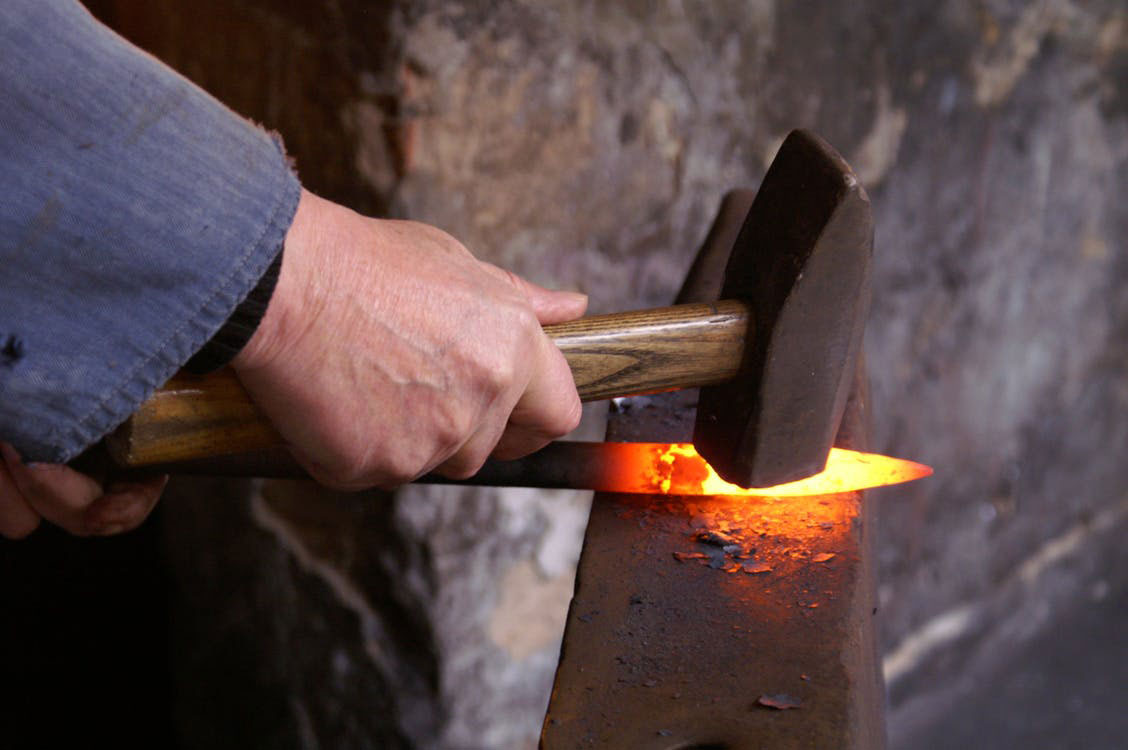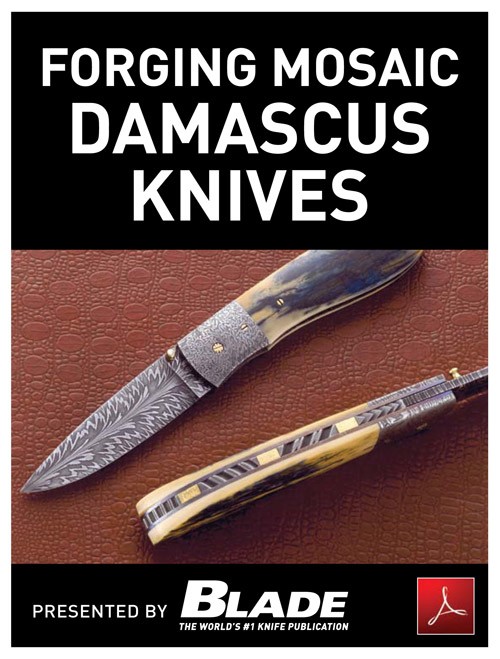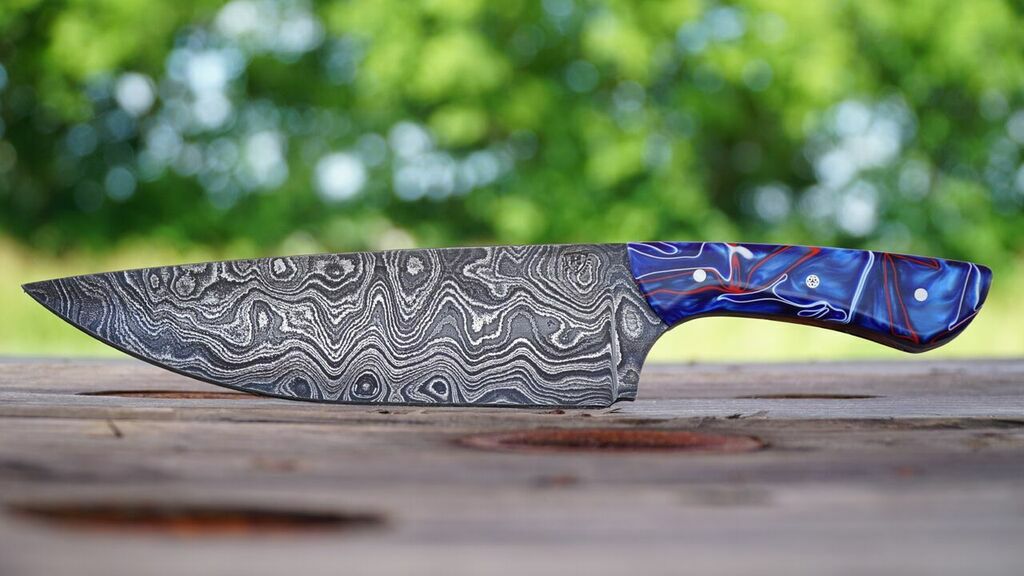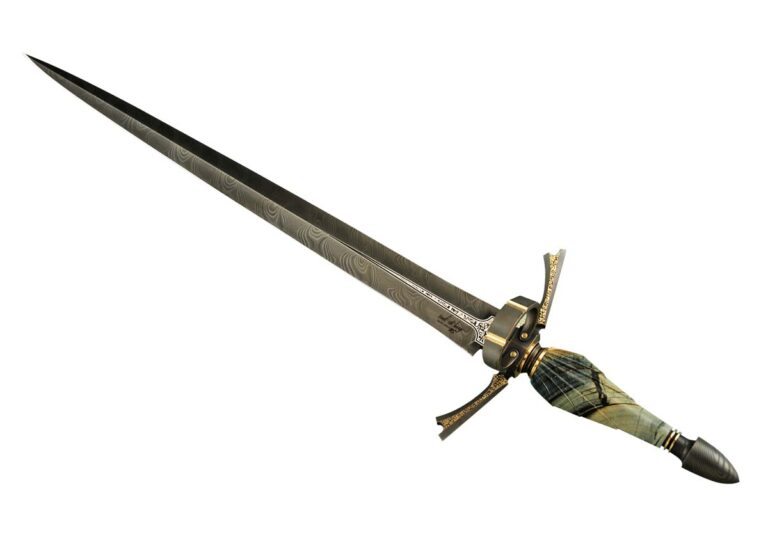
How to get the most from your knives on social media platforms.
It’s immediate. It’s visual. It’s effective.
These are just a few of the attributes that describe the impact of social media on modern life. Whatever the topic, some form of social media allows participants, observers, critics and commentators to weigh in, expressing their views and—of course—buying and selling.
For instance, the platform of Instagram has become a prominent factor in the marketing of many custom knifemakers, purveyors and collectors, and the reasons for the phenomenon are varied. They center around the immediacy, visual quality and effectiveness in showcasing and selling, developing a following, and generally in raising a knifemaker’s profile in the all-important marketplace. Setting up an Instagram account is simple, cost-effective and for many generates the desired results.
“Instagram and other social media platforms are an excellent way to put yourself in the public’s eye,” noted purveyor/ABS master smith Dave Ellis of exquisiteknives.com. “Through good knife photography, clear and precise descriptions of the same, and reasonable follow-up you can publicize your products as well as introduce your website. TikTok is rapidly gaining popularity, and YouTube is an excellent way to achieve your goal of spreading the gospel of custom knives.”
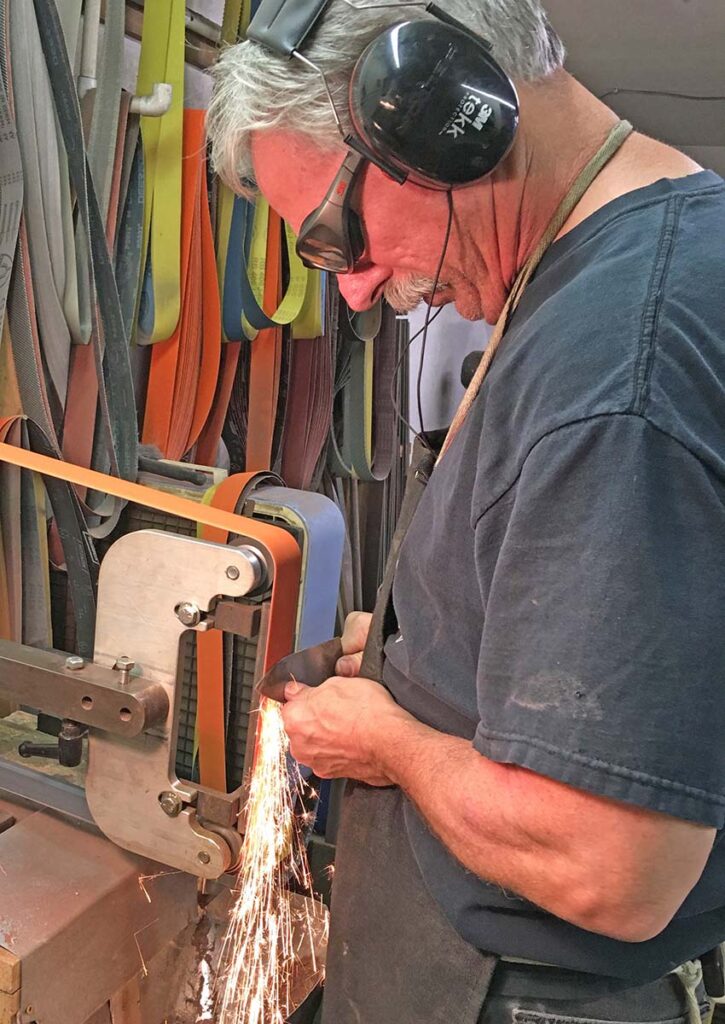
Kim Breed, knifemaker and BLADE® field editor, uses Instagram to generate sales and promote awareness among the buying public while also offering some insights into the knifemaking process. The value of experience is levered through the visual, and everybody gains.
“I do videos and tutorials and just basically little blurbs of me building a knife,” Kim commented. “I show the blade when I’m finished grinding and then the final product. That’s when it is put up for sale. Tutorials let people know this is why I charge what I charge, the little steps that you do when you’re making a knife. For example, when you’re forging you can show that process.”
Breed, whose videos are available on Instagram at kimbreed1911, advises that would-be Instagram users monitor their posts, beware of hashtags that are too generic, and frequently assess the return on their investment of time.
“A lot depends on the hashtags,” he said. “People can copy stuff, come up with a fake account, or hack into anything. Once you start, you’ve got to stay on it. I’ve gotten messages that don’t make sense, and you can catch situations where people have set up fake accounts and used your pictures to get people to send money first when they are scamming. Check every hashtag you do and make sure it’s going to a knife site. That was something I’ve picked up in the five or six years I’ve been doing Instagram.”
For those who choose to display their wares on Instagram or any other social media, Ellis recommends, “Scammers are everywhere, so do your due diligence and look deeper into anything that looks too good to be true. Haters are very common, so expect some negative comments and take them in stride. Getting into a heated battle only fuels the folks that like to fan the flames, so keep a cool head and remember that your goal is to promote the use and collecting of custom knives as an art form and tool.”
Knife Makers & Knife Collectors Connect
ABS master smith Neels van den Berg, who runs Black Dragon Forge based in South Africa, keeps his Instagram use in perspective. There are obvious positives and potential pitfalls, but he sees an incredible opportunity to raise visibility.
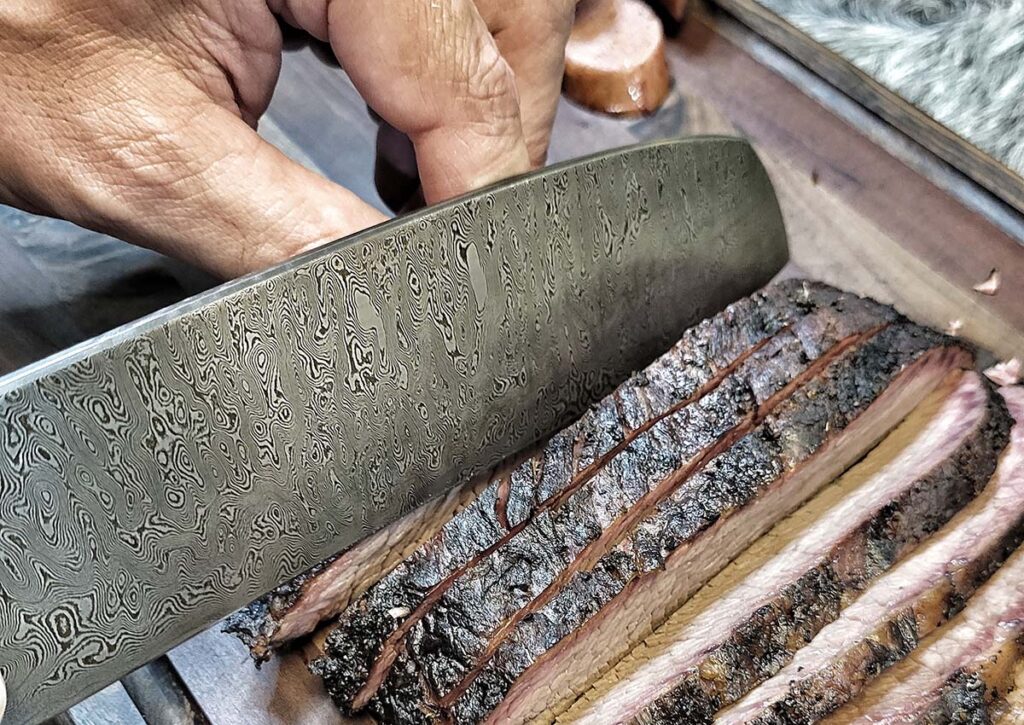
“Instagram is a free platform designed primarily for sharing photos and videos to foster social interaction,” Neels commented. “Users can reasonably expect to engage with its 2.11 billion users worldwide by uploading and interacting with content through likes, comments and direct messages [DMs#]. However, it’s important to understand that Instagram’s core purpose isn’t sales, it’s connection. Social media users should approach the platform as a tool for storytelling, networking, and building a community rather than expecting it to function as a direct sales engine. Understanding this distinction is critical when crafting a marketing strategy for your business.”
According to van den Berg, Instagram can amplify a knifemaker’s reach, create brand awareness and build credibility, which may lead to sales. But these are byproducts of fostering genuine engagement and building relationships through the platform.
“For a knife business or hobby, this means showcasing the passion and craftsmanship behind your work,” Neels remarked. “People will follow you for who you are—your skills, values and story—not just for what you have to sell. Social media users are often turned off by hard sales pitches, so the focus should be on creating content that resonates emotionally or intellectually with your audience. While sales might be part of the eventual outcome, it shouldn’t be the primary intent. Instead, aim to captivate your audience by showing the process behind your craft: the highs and lows, the struggles and triumphs, and the sheer joy of creating. When you build this level of connection, your products naturally become a way for followers to support you rather than a commodity you’re trying to sell.”
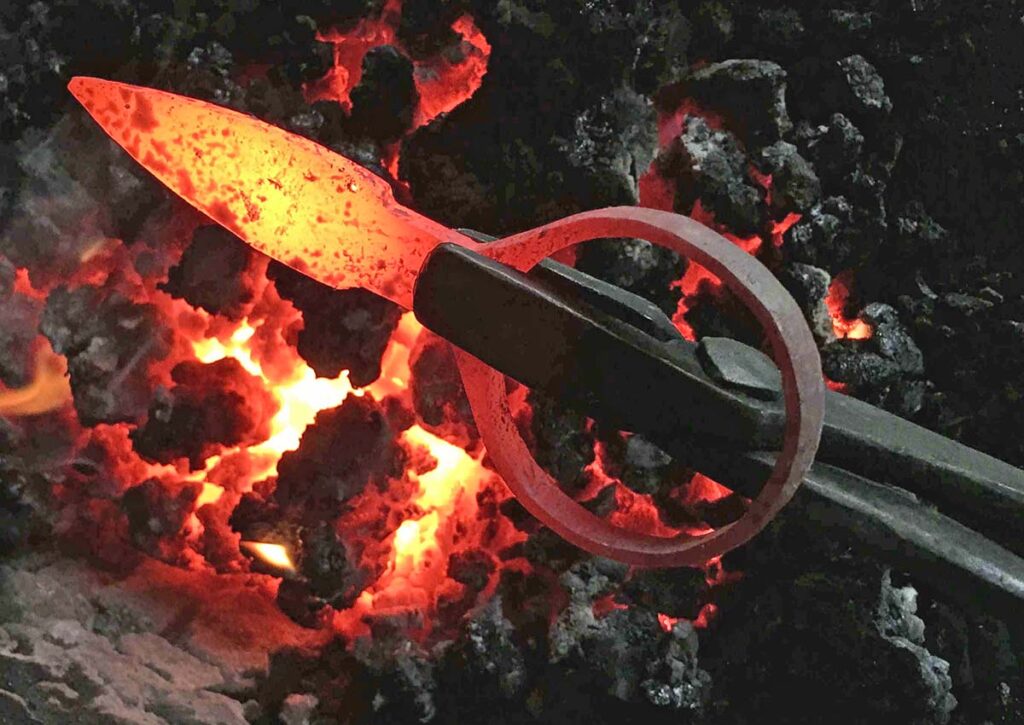
The secret to Instagram and social media success is certainly influenced by the delivery. Setting up a presence and presenting a perspective on the maker’s work and creative journey do make a difference.
“Users should expect to display their point of view in a clear and cohesive way,” related ABS master smith Nick Rossi of Vassalboro, Maine-based Nick Rossi Knives. “That means who they are, what they make, and why they make it. Social media is a relatively efficient way to project that to a potential customer. Sales and cultivating a customer are byproducts of that action.”
Setting Social Media Goals
Finding the right combination of social media outlets depends on the knifemaker’s perspective. Analyzing what the maker hopes to achieve drives the investment of time and attention.
“The best social media platform depends entirely on your goals, audience and the type of content you want to share,” van den Berg observed. “Each platform serves different purposes and attracts unique demographics, so a thoughtful combination works best.
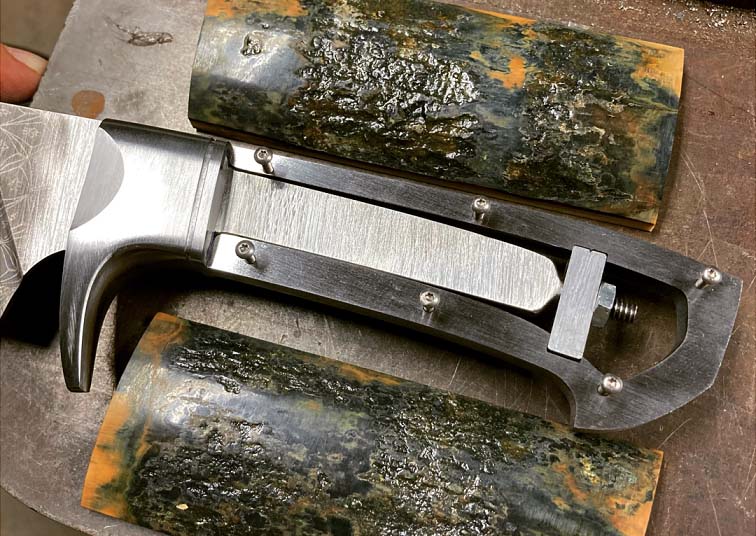
“I have three primary goals on Instagram: 1) Showcasing my craftsmanship—I aim to highlight the intricate details and artistry of my creations, emphasizing their quality and uniqueness. This draws attention to the skill and effort behind each piece, making my work stand out in a crowded marketplace; 2) Building my brand identity—My goal is to establish a recognizable and authentic brand that resonates within the knifemaking community. This isn’t about a logo or maker’s mark, it’s about the story, values and personality behind my work; 3) Engaging with my community—Social media is about relationships. By actively participating in discussions, responding to DMs and comments and sharing insights, I foster a sense of community among knife enthusiasts and artisans.”
To achieve his goals, Neels relies on high-quality visual content, educational posts, consistent branding, and authentic interaction through responses to comments or joining a relevant conversation.
Ellis commented, “For retail sales, I prefer TikTok and YouTube. By utilizing every media that you can, your products are constantly put in front of not only the buying public, but you are also promoting yourself to show promoters and attendees.” Instagram and Facebook are the priorities for Rossi “because that’s what most of my customers use.”
He added, “I only have time to manage two platforms on top of being a professional craftsperson. For collecting and very niche topics, Facebook groups provide a wealth of knowledge. I have a private Facebook group for only my online and in-person students that has worked very well for advice and troubleshooting.”
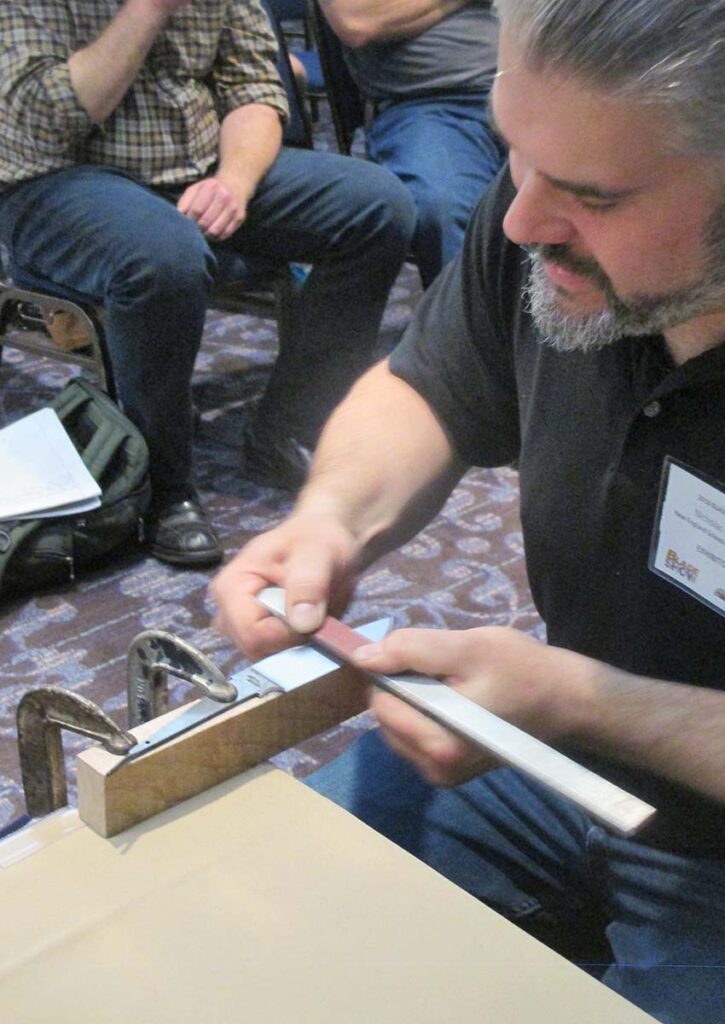
Variations of content help keep social media posts entertaining and business related, and encourage a possible exchange of information.
“We live in a world of short, informative, and, let’s face it, lively. Clicks mean interaction, potential video formats,” Rossi observed. “Attention spans have grown shorter, and social media users have come to expect shorter, action-packed video. If you are going to have narration, subtitles are important. Users want the option of viewing without sound. Choosing popular songs may help your videos pop up in the algorithm more readily. I want people to think of me as a skillful knifemaker with a focus on forging, a maker of interesting and innovative knives, and an experienced educator. Each post focuses on one of those three things.”
Social Media Do’s And Don’ts
An awareness of certain standards provides knifemakers with extra assurance that their posts meet the chosen platform’s guidelines and minimize the risk of being flagged or taken down. Though Breed said he has done well with Instagram sales, the limitations of filters can have negative effects on viewership.
“Filters can hurt a knifemaker, so before you might get 100,000 or 200,000 views,” he said, “but you can’t do that if you picture a knife as an item of war, and watch out what you say about politics and whatever. Stay away from there.” Ellis agrees. “Stay away from animals or any violent visuals when posting,” he added. “Stick to the art or utilitarian uses for custom knives, and you should be OK.”
For van den Berg, compliance and creative communication are essential to success when visualizing or discussing knife-related topics on social media.
“The key is to reframe how your work is presented, ensuring that it aligns with platform guidelines while still engaging your audience,” he remarked. “Avoid flagged terms like ‘knife,’ ‘blade,’ or ‘weapon,’ and instead use neutral or creative alternatives such as ‘tool,’ ‘craft,’ or ‘functional art.’ These terms emphasize the artistry and utility of your pieces, shifting focus away from their potential as weapons. Repositioning your knives within broader contexts is another effective tactic. Showcase them as tools for culinary use, outdoor adventures or collectible art. Using in-progress shots, close-ups of handles, or images that emphasize materials and craftsmanship can sidestep direct visual triggers while still highlighting your work.”
Another knifemaker option is to place the work in context.
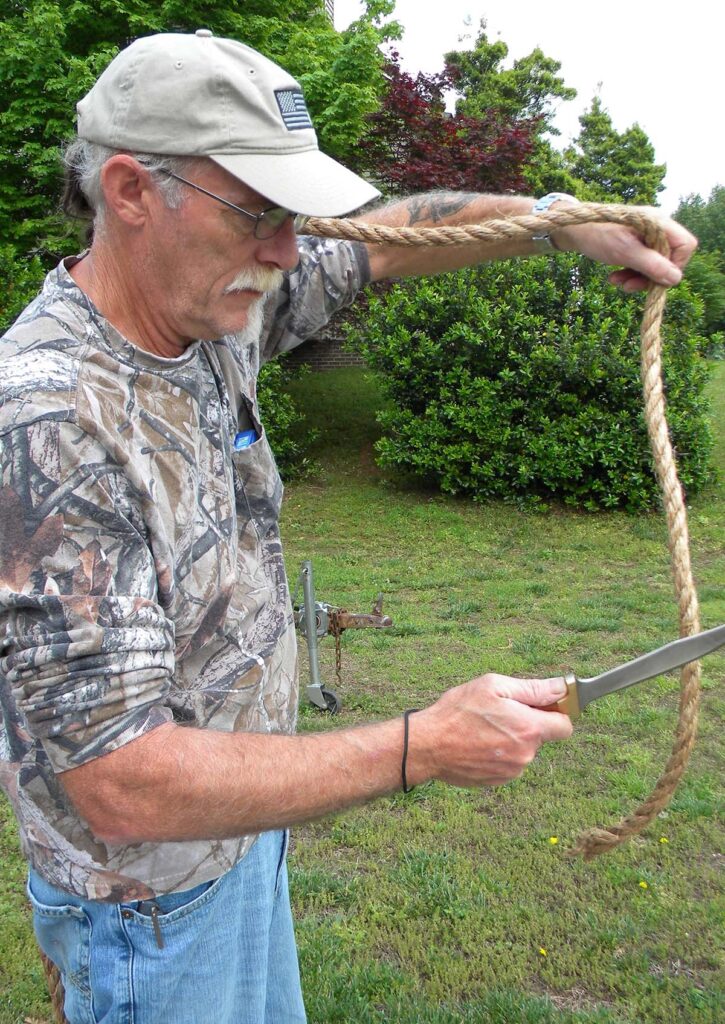
“To further circumvent restrictions, use storytelling and indirect messaging,” Neels encouraged. “Instead of explicitly saying, ‘Check out my new knife,’ share the inspiration behind the design or challenges faced during its creation. Platforms like Instagram and TikTok, which favor storytelling and visual diversity, are ideal for this approach. Additionally, private groups, email newsletters, or niche forums provide safer spaces to share uncensored content with your core audience.”
Reaching as many followers, shoppers, and potential buyers as possible, custom knifemakers who take advantage of social media routinely find that the reward is in lock step with the attention and time devoted to originate and maintain a strong presence. For those who manage it well, social media exists in the present and will remain a formidable asset in the future.
More Knifemaking & Knife Collecting:
- Who Made Your Knife?
- Knife Steel Trends: What To Look Forward To In 2025
- Knife Buying Don’ts: How To Avoid Cutting Pitfalls
- Instagram: Social Media’s Knife Leader
 NEXT STEP: Download Your Free KNIFE GUIDE Issue of BLADE Magazine
NEXT STEP: Download Your Free KNIFE GUIDE Issue of BLADE Magazine
BLADE’s annual Knife Guide Issue features the newest knives and sharpeners, plus knife and axe reviews, knife sheaths, kit knives and a Knife Industry Directory.Get your FREE digital PDF instant download of the annual Knife Guide. No, really! We will email it to you right now when you subscribe to the BLADE email newsletter.


